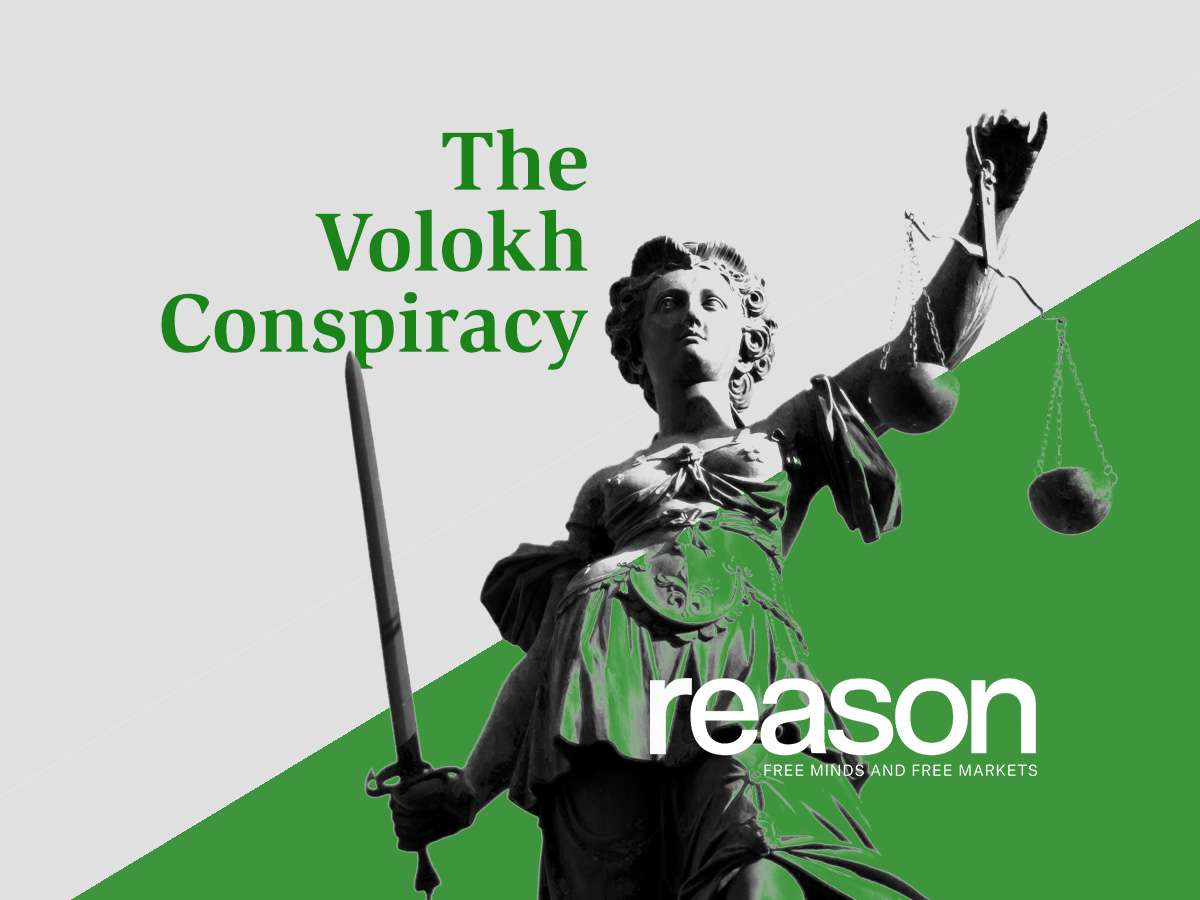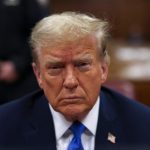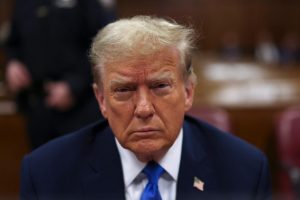
There’s long been a dispute about whether religious freedom provisions limit the government’s power related to religious sites on government land. These are usually American Indian sites, though in principle they might be other religious sites as well.
In Lyng v. Northwest Indian Cemetery Protective Ass’n (1988), the Court held that the Free Exercise Clause doesn’t give religious groups the legal right to stop various government activities related to such sites (even though at the time, after Sherbert v. Verner but before Employment Division v. Smith, the Court had read the Free Exercise Clause as securing a presumptive right to religious exemptions from generally applicable government action). But one enduring question has been whether the Religious Freedom Restoration Act of 1993 should be read as perpetuating Lyng, alongside other Sherbert-era precedents, or should be read as superseding it. (See my Intermediate Questions of Religious Exemptions, pp. 652-56 for more on some related matters.)
In any event, this issue is now up before the Ninth Circuit en banc, which heard argument last week on it in Apache Stronghold v. U.S. (see, e.g., this Deseret News article [Kelsey Dallas]); the panel had ruled, 2-1, against the religious freedom claims, but the Ninth Circuit agreed to rehear the case en banc. My colleague Gene Schaerr at Schaerr | Jaffe LLP, at which I’m a part-part-part-time Academic Affiliate, represents the Jewish Coalition for Religious Liberty, the International Society for Krishna Consciousness, the Sikh Coalition, and Protect The 1st as amici in the case.
In any event, Gene kindly put together an item on the case and the oral argument, which I’m passing along below; I’d be glad to add contrary views as well (and you can see some in the panel majority opinion):
Last week, the Ninth Circuit held a lively en banc oral argument in Apache Stronghold v. United States—a case raising crucial questions of religious freedom law and, most importantly, statutory interpretation.
The case focuses on an indigenous sacred site called Chi’chil Biłdagoteel, or Oak Flat, which has been sacred to Western Apaches since before European contact and remains the site of key religious ceremonies that, according to Apache belief, can’t take place elsewhere. The federal government has proposed transferring Oak Flat to a private company for a copper mine, which would swallow the site in a massive crater, ending the Apaches’ religious exercises there forever. The question is whether destroying the sacred site and ending the Apaches’ religious practices “substantially burdens” their religious exercise under the Religious Freedom Restoration Act (RFRA).
The answer under RFRA’s text seems obvious: ending a religious exercise forever “substantially burdens” it. As then-Judge Gorsuch explained, when the government doesn’t just penalize a religious exercise, but “prevents the plaintiff from participating in” it—as by not accommodating the practice in prison—the government “easily” imposes a “substantial burden.”
At oral argument, however, several Ninth Circuit judges wrestled with whether this commonsense textual argument should carry the day. Their questions centered on three areas of broad significance to the law of religious freedom and statutory interpretation.
First, Judges Nelson and Berzon asked whether the Supreme Court’s 1988 decision in Lyngv. Northwest Indian Cemetery controls the meaning of “substantial burden” in RFRA. In Lyng, the Supreme Court rejected a claim that the government violated the Free Exercise Clause by authorizing the paving of a road in a forest sacred to Native Americans.
But Lyng differs from the Apache Stronghold case in two respects. Factually, the road at issue in Lyng wouldn’t be built over the plaintiffs’ sacred sites, but a half-mile or more away—leaving the plaintiffs free to continue visiting their sites and engaging in the same religious exercises as before. They alleged instead that the sound of the road nearby would diminish the “efficacy” of their practices—a religious question that Lyng said civil courts “cannot … measur[e].”
More importantly, Lyng was decided under a different legal standard—the Free Exercise Clause, not RFRA. And considerations unique to the Free Exercise Clause drove the Court’s decision. For example, Lyng repeatedly emphasized that the “crucial word in the constitutional text”—and, thus, in the Court’s analysis—”is ‘prohibit'”—a word that isn’t used in RFRA. And Lyng repeatedly contrasted laws that “prohibit” religion with laws that have only “incidental effects” on religion. In other words, the decision to build a road wasn’t targeting religion; the religious harms were simply “incidental effects” of a broader “government program[],” requiring no heightened review.
This theory—that the trigger for heightened review under the Free Exercise Clause is a lack of neutrality—became the centerpiece of the Court’s approach to the Free Exercise Clause two years later in Employment Division v. Smith. And one of the leading cases Smith relied on for this rule was Lyng.
RFRA, by contrast, expressly rejects the distinction between targeted and incidental burdens on religious exercise. Indeed, the whole point of the statute was to apply strict scrutiny “in all cases where free exercise of religion is substantially burdened”—”even if the burden results from a rule of general applicability.” 42 USC 2000bb(b)(1), 2000bb-1(a).
Nor is Smith the only case to understand Lyng as being about neutrality and general applicability. Every Supreme Court free-exercise case since Lyng has characterized it as an example of Smith‘s neutral-and-generally-applicable standard in action—from Trinity Lutheran to Espinoza to Fulton—with Trinity Lutheran citing it as the leading example of how the Court, in applying the Free Exercise Clause, has been “careful to distinguish” between laws that are “neutral and generally applicable” and laws “that single out the religious for disfavored treatment.”
Other circuits have done the same. In Tenafly Eruv Association v. Borough of Tenafly, for example, Orthodox Jews sought access to government-controlled utility poles to create an eruv—a ceremonial area within which Orthodox Jews can carry objects during the Sabbath. When the government refused and was sued under the Free Exercise Clause, it defended based on Lyng, claiming that Clause does not apply to burdens resulting from government management of “its land.” But the Third Circuit disagreed, noting that Lyng was a case about neutrality, not just about government land—and that the Free Exercise Clause “applies not only when a coercive law or regulation prohibits religious conduct, but also when government denies religious adherents access to publicly available money or property.”
Second, Judge VanDyke offered several hypotheticals probing the role of alleged spiritual harm in the “substantial burden” analysis. For example, would a substantial burden arise simply if someone believes they will go to hell if the government doesn’t sell them a particular piece of land? But that and similar questions conflate two distinct issues—the spiritual consequences to a religious believer from not engaging in a religious exercise, and the objective obstacle the government places in the way of that exercise. The proper focus of the substantial-burden inquiry is on the latter—asking what the government has done to make the plaintiff’s religious exercise objectively more costly or difficult.
Take Hobby Lobby for example. The burden there wasn’t the divine wrath the business owners believed they might suffer if they covered abortifacients in their insurance plans. Rather, the burden was that the government made their religious exercise more costly by threatening large monetary penalties. Similarly, the burden in Yoder wasn’t the feared corruption of the Amish children’s souls from attending public school; it was that the government made their religious practice—foregoing public education—objectively more difficult by imposing criminal fines.
So too in Apache Stronghold: The burden isn’t the spiritual pain the Apaches will feel when their sacred site is destroyed. It’s that the government makes it objectively more difficult to engage in their religious exercise by allowing a mining company to blow up their sacred site.
While focusing on alleged spiritual injury might seem superficially sympathetic to religious liberty claims, moreover, it would actually harm religious liberty in the long run. One reason is that determining whether particular spiritual consequences count as a substantial burden would enmesh courts in religious questions. (Would the plaintiff in Judge VanDyke’s hypothetical really go to hell? Would the Hobby Lobby plaintiffs really be complicit in abortion?) That approach would also create immense pressure on courts to find other (atextual) ways to curtail RFRA—which is what the government asked courts to do (unsuccessfully) in the contraception-mandate litigation.
Judge VanDyke asked about one possible curtailment: simply deem some substantial burdens not “cognizable” under RFRA if they result from certain types of federal action—such as a decision about the use of federal land. But this novel idea runs headlong into RFRA’s text—which says it applies to “all Federal law, and the implementation of that law, whether statutory or otherwise.”
That idea also lacks any apparent basis in principle. If anything, the federal government should have less discretion in managing public lands than in enforcing its criminal laws, protecting public health and safety, or operating high-security prisons—all of which are already subject to RFRA. As Justice Scalia said in Smith: “it is hard to see any reason in principle or practicality why the government should have to tailor its health and safety laws to conform to the diversity of religious belief, but should not have to tailor its management of public lands” (citing Lyng).
And, if courts can make atextual, unprincipled carve-outs from RFRA for federal land, there is no reason they can’t make similar carve-outs for other disfavored religious liberty claims—such as those alleged to cause “third-party harms” (which the government and scholars asked the Court to carve out in Hobby Lobby) or those involving antidiscrimination laws.
The way to avoid all this is to follow RFRA’s text and precedent—asking whether the government has made it objectively more difficult for the plaintiff to engage in the particular religious exercise at issue. If so, the court should find a substantial burden, no matter the form of the federal action or the political valence of the case—and then let the government explain why it believes the burden is nevertheless justified.
Finally, Judge Collins inquired whether RFRA is applicable to the land-transfer at all, given that the transfer is authorized by a statute enacted after RFRA, and in the event of a conflict between two statutes, a later-enacted statute might be thought to trump an earlier-enacted one.
Notably, RFRA by its terms expressly tells courts how to resolve this question—instructing that RFRA applies to later-enacted statutes unless “such law explicitly excludes such application by reference to this chapter.” But the government, perhaps taking its cues from mining-interest amici, has offered a late-breaking argument that this provision of RFRA is unconstitutional. Notwithstanding Congress’s express direction, the government urges, a later-enacted law might be held to “impliedly” repeal RFRA without mentioning it.
That argument would be devastating for religious liberty. For thirty years, Congress has legislated against the background principle that RFRA applies to head off negative consequences from later statutes unless it is expressly displaced. To hold this provision unconstitutional would come as a shock both to Congress and to proponents of religious liberty—particularly after recent enactment of the Respect for Marriage Act, which was defended on the ground that RFRA would still apply to it. It would also open up an entirely new front for religious liberty’s opponents—who can argue not only that a later-enacted law complies with RFRA but that RFRA doesn’t apply in the first place, because Congress has (without saying so) overridden it.
Such a result doesn’t empower Congress—which is well aware of RFRA’s explicit-reference provision and needs nothing more than a simple majority to comply with it. It empowers judges—liberating them from the straightforward, narrow inquiry of whether a later-enacted law refers to RFRA and instead encouraging them to hunt for implied repeals in the later-enacted law’s penumbras and emanations. The Constitution requires nothing of the sort.
Nor does any countervailing precedent support the mining interests’ view. For example, one of their lead cases is the Supreme Court’s 1955 decision in Marcello. But Marcello didn’t ignore or strike down a provision requiring that later departures be express—it applied it. The earlier-enacted law there (the APA) said it supplied the procedure governing administrative litigation unless a later-enacted law displaced it “expressly.” The later-enacted law, meanwhile, said it supplied the “sole and exclusive procedure” in deportation cases. The Supreme Court held that this language “expressly supersedes” the APA—not that the APA’s express-repeal provision was unconstitutional.
Fortunately, we don’t need to wonder about the Supreme Court’s views on this subject. As an important amicus brief explains, the Court has twice applied RFRA’s explicit-reference provision in high-profile cases (Hobby Lobby and Little Sisters of the Poor). So has the Seventh Circuit, which in Korte v. Sebelius said that RFRA “accounts for” the rules governing the temporal allocation of legislative power, since Congress remains free to repeal it at any time (by complying with the explicit-reference provision). Thus, to rule otherwise would both conflict with the Supreme Court and create a novel circuit split.
[*****]In short, RFRA’s text supplies a simple answer to the question presented in Apache Stronghold: The government “substantially burdens” religious exercise when it authorizes the complete physical destruction of a Native American sacred site, ending tribe members’ core religious exercises forever. This doesn’t mean the Apaches automatically win their case; it just means they get to the second step of the analysis—the balancing test of strict scrutiny.
The government fears that applying that test to federal land-use decisions would be unworkable. But federal land-use decisions are already subject to an alphabet soup of restrictive laws like NEPA, FLPMA, NHPA, NAGPRA, CWA, CAA, and ESA. For example, if the mine in this case threatened an endangered snail darter, the project couldn’t go forward under the Endangered Species Act at all—and the government wouldn’t even get a chance to satisfy strict scrutiny. So applying RFRA to federal land-use decisions still gives the Apaches’ fundamental right of religious freedom less protection than is already given to endangered animals.
The government’s policy argument is also the same argument Congress rejected in enacting RFRA. The Supreme Court in Smith feared that applying strict scrutiny to all governmental actions “across the board” would be “courting anarchy.” But Congress has told the federal courts not to be afraid of strict scrutiny: it is a “workable test for striking sensible balances between religious liberty and competing prior governmental interests.”
The question is whether the Ninth Circuit will apply RFRA’s plain text or will instead succumb to atextual, fear-based reasons for limiting RFRA’s reach.





